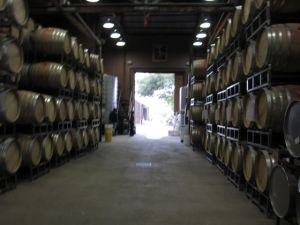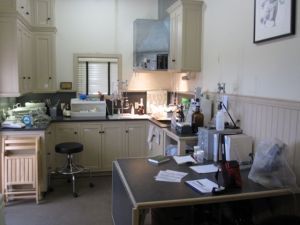
Sulfur occurs naturally in wine. During fermentation, yeast break down amino acids to make nitrogen available, and some of which contain sulfur atoms. When this sulfur is released, it bonds to oxygen, creating sulfites. It is serendipitous that these sulfites occur naturally, as they are beneficial, preventing oxidation and bacterial spoilage. But they often occur at very low levels, and dissipate over time, making the wine vulnerable, which is why we add sulfites to wine... anything other than a clean, fresh tasting wine would be unmarketable. So we measure the wine for sulfur levels, and then make additions as necessary.

The bungs are cleaned before prying them out of the barrels. A wine thief is inserted and lots are aggregated into beakers which are then sent to the lab. Meanwhile, reserve wine is brought out of the cellar, pumps and hoses attached. Once additions are made, we pump reserve wine into the barrel to top them off, then pound in clean rubber bungs with a mallet. Keeping the barrels full means less oxidation.
The tanks are adjusted too. Sampling from the tank is much easier, if messier. 3000 gallons are held back by valves. When opened slightly, wine sprays furiously, so we keep the beakers close and we stand to one side. Adjusting means climbing to the catwalk and opening a sealed hatch. Its mixing that's the problem. A propeller has to be inserted into a sealed tank to turn over 3000 gallons of wine, then removed. Order of operations becomes imperative; clamping, sealing, opening, locking, always double checking, and working though the set of actions. From there the tanks and barrels rest, waiting for bottling.
No comments:
Post a Comment